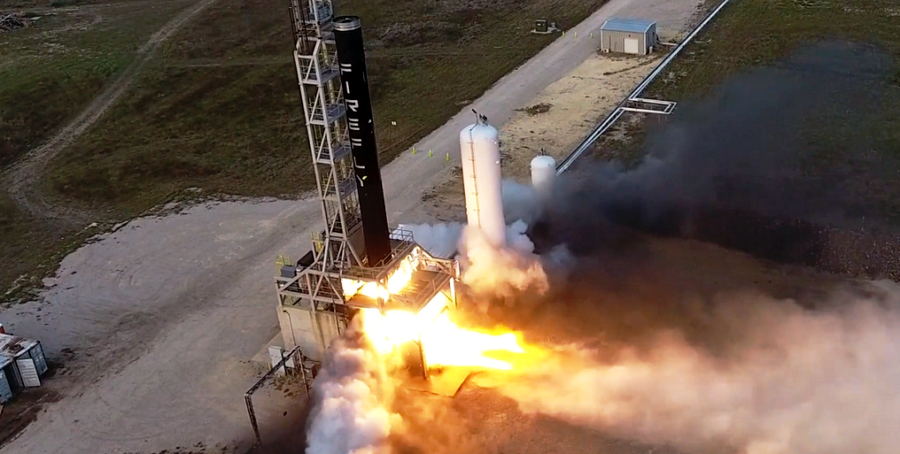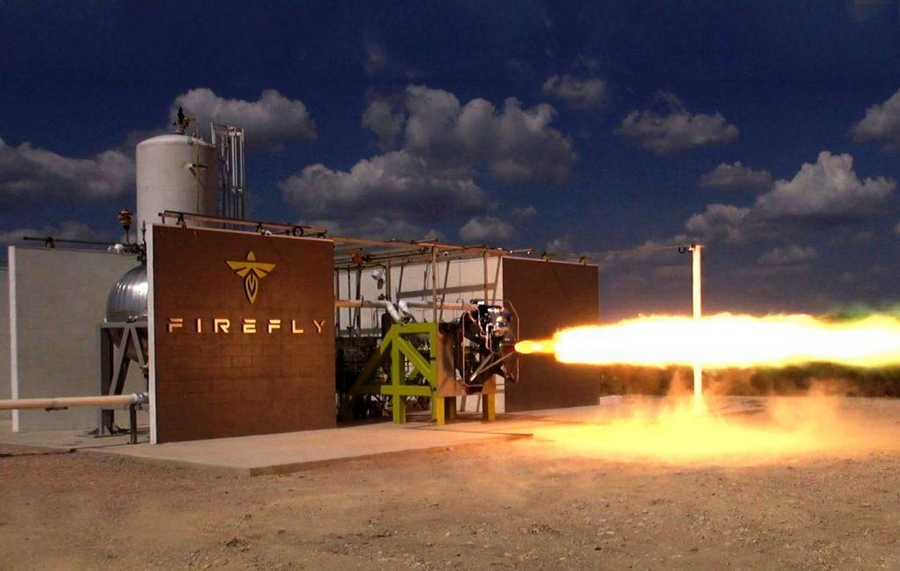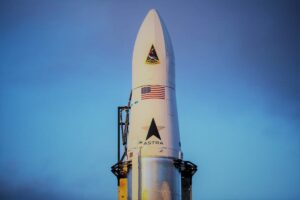Firefly Alpha rocket launch dates, history and schedule
13th Jun 2022
Firefly Aerospace is a private aerospace company developing the small, low-cost Alpha and Beta Firefly launch vehicles to carry small satellites to LEO. The company was founded in 2014 by American rocket engineer Tom Markusic, who is committed to the idea of “New Space” ─ to making space launches more accessible to commercial customers.
An 8-year path to orbit
In eight years, the company has grown from a small startup to a prominent and promising player in the space market. This breakthrough was facilitated by a powerful symbiosis of science, technical skills and about $100 million in investments from the venture fund Noosphere Ventures Partners. Collaboration with Ukraine, which has rich experience in rocket science, also played a big role.
Thanks to the managing partner of Noosphere Ventures and the former head of the company, Max Polyakov, who has Ukrainian roots, in 2017, the Firefly R&D centre was opened in the Ukrainian city of Dnipro. It attracted more than 50 of the best engineers, scientists and technicians from leading Ukrainian rocket and space enterprises, notably Yuzhniy Design Bureau and Yuzhmash engineering plant. It was in R&D Firefly Dnipro that the automation and combustion chamber units for the first Alpha launch were created. In the future, the company plans to establish a full cycle of rocket engine production, including engines for the Beta rocket, which is still under development.
In early 2022, Firefly carried out the first Alpha launch and is now preparing for a full-fledged entry into the market.
What is the Firefly launch vehicle and how is it different?
Up to 300 small satellites are annually delivered to different orbits, and these launches do not always require very powerful and expensive rockets. Tom Markusic’s idea was to provide a cost-effective option that would eliminate the dependence on infrequent heavy rocket launches. And he almost succeeded. A Firefly space launch costs a quarter of a Falcon or Ariane rocket launch. At the same time, unlike current micro-launchers, Virgin Orbit Launcher One and Rocket Lab Electron, Firefly will be able to deliver over 1100 kg of cargo to low Earth orbit (200 km) and over 740 kg to sun-synchronous orbit (500 km).
First rocket engine tests

The company’s rapid development and tangible results secured Firefly Aerospace not only private customers but also US government contracts. In 2019, the US Air Force selected Firefly for its Launch program. In December 2020, NASA included the company in the Launch Services Program for launching ultra-small satellites and CubeSats into orbit, and in January 2021, in the Artemis Commercial Moon Delivery program. This means that the Alpha launch vehicle has been entrusted with the delivery of cargo for lunar missions.
Alpha rocket characteristics
Firefly rocket has a lot of advantages, but the most important one is the combination of characteristics and delivery cost. Here’s what Alpha’s main specs look like compared to its closest launcher competitors.
|
Launch Vehicle |
Payload to LEO, kg |
Approx. Launch Cost, million $ |
Height, m |
Mass, tons |
1-stage Engines |
Propellant |
|
Firefly Alpha |
630-1030 |
15 |
29.5 |
54 |
Reaver/ Lightning 1 |
LOX / RP–1 |
|
Virgin Orbit Launcher One |
300-500 |
12 |
21.3 |
30 |
Newtone Three |
LOX / RP–1 |
|
Rocket lab Electron |
150-300 |
5-7 |
18 |
12.5 |
Rutherford |
LOX/RP-1 |
|
Arianespace Vega |
300-2500 |
26-37 |
30 |
137 |
Avio |
HTPB (solid) |
First Alpha Launch
The first Firefly launch took place on September 3, 2021, from Vandenberg Air Force Base. The Vandenberg payload included microsatellites for the DREAM educational mission. During the first two and a half minutes the flight went well, the rocket lifted off successfully and broke the sound barrier, but was then destroyed by the emergency flight termination system. The cause was a loss of orientation brought on by a malfunction in one of the four first-stage engines. A detailed investigation showed a faulty electrical connector and several “components that can be easily replaced.”
The company stated that, even though the launch ended in failure, it provided important data to avoid errors on future flights. However, the next Alpha launch date has shifted several times.
Full launch video
In the video below, you can see how the first Alpha launch went, from the moment the rocket left the ground to the controlled explosion.
Second Firefly launch: to the black
On 17 July 2022, the company postponed the second Alpha launch once again. This decision was taken for several reasons: the busy schedule of government launches at Vandenberg Air Force Base, additional tests of the Reaver engine that experienced an anomaly during the first launch, and pending application for a new FAA launch licence.
“We have the unfortunate precedent of being the first large composite rocket ever to be terminated,” told the executive director of Firefly, Peter Schumacher. Previous debris models, including the one used for that flight, were based on metallic rockets. “So when we did terminate, some of the pieces fell outside where this model predicted.” Schumacher also specified that the revised model now matches the behaviour observed on the first launch, so they are awaiting final approval by the FAA and Western Range.
On 17 August Firefly Aerospace reported about the successful completion of the Alpha rocket static fire test and determined a new Firefly launch date — 1st of October.
The second Alpha mission named FLTA002 “TO THE BLACK” was intended to launch three test payloads into an elliptical LEO (TechEdSat-15, 3U NASA technology demonstration CubeSat, Teachers in Space Serenity, a 3U educational CubeSat and PicoBus, a deployer from the Libre Space Foundation with five PocketQube picosatellites).
On the 1st of October, at exactly 00:01 Pacific Time, Firefly Alpha successfully launched from Vandenberg Space Force Base in California. According to the company’s mission control centre report, the rocket successfully completed all phases of the flight, including payload deployment.
However, it later turned out that after the upper stage performed a circularisation burn, the satellites ended up in lower orbits than originally planned (219×279 km instead of 300 km) and eventually entered the atmosphere earlier than expected.
Despite this fact, the Firefly Aerospace team noted that the primary objective for the Alpha FL TA002 mission was to achieve a predefined elliptical orbit following the second stage burn, which was 100% successful.
FLTA003: Victus Nox
This was the first fully successful Firefly Alpha rocket launch. The mission, called VICTUS NOX, which means “conquer the night” in Latin, was aimed to show that the U.S. could respond as quickly as possible to a security threat and launch a satellite into space within 24 hours after the customer’s notice.
On 14 September at 7:28 pm PT, Firefly Alpha lifted off from Vandenberg Air Force Base and successfully completed all phases of flight, including first-stage main engine shutdown, stage separation, second-stage ignition, and payload deployment to a predetermined location on the SSO, as well as the second stage re-ignition and targeted atmosphere re-entry.
FLTA004: Fly the Lightning
As part of the fourth Firefly Alpha mission, called “Fly the Lightning,” the rocket was supposed to launch a payload for Lockheed Martin but encountered a similar problem to the second launch.
The Firefly launch was originally scheduled for 20 December but was delayed two days due to weather conditions.
On Friday, 22nd December 2023, at 9:32 am PST Firefly Alpha launched from Vandenberg Space Force Base in California. At first, the flight proceeded normally. The rocket successfully ascended, the second stage separated, ignited the engine and entered its nominal transfer orbit. In about 40 minutes, the rocket was supposed to re-ignite the upper-stage engine to enter a circular orbit for payload deployment. However, the engine failed to fire, and the second stage was unable to deliver the payload to the precise target orbit. Despite this, communication with the satellites was established, and the mission continued.
This time, Firefly Aerospace admitted the failure and promised to make every effort to identify the causes of the second-stage failure and ensure that flight anomalies are eliminated.
Orbital Today continues to monitor the status of the ‘Fly the Lightning’ mission and encourages you to follow mission changes and changes. In the meantime, let’s look at the statistics of already completed launches.
Firefly Alpha launch schedule
|
Date and time, UTC |
Launch site |
Payload |
Orbit |
Customer |
Launch outcome |
|
3 Sept 2021 01:59 |
Vandenberg SLC-2W |
Destroyed in flight |
Retrograde LEO |
Failure |
|
|
Maiden flight as part of Firefly DREAM mission. Due to an engine failure approximately 15 seconds after the launch, the rocket lost control at a transonic speed of approximately two and a half minutes after launch that resulted in the activation of the flight termination system and loss of the vehicle. |
|||||
|
1 Oct 2022 07:01 |
Vandenberg SLC-2W |
TechEdSat-15 (TES-15), TIS Serenity, PicoBus (deploying five PocketQubes) |
target: Retrograde LEO (300 km circular, 137° inclination) actual: Retrograde LEO (219 km x 279 km, 136.9° inclination) |
NASA, Teachers in Space, Libre Space Foundation, Fossa Systems, AMSAT-EA |
Partial success |
|
“To The Black”. First partially successful orbital launch, carrying educational payloads. Alpha deployed 7 satellites, however, due to the lower-than-intended final deployment orbit, most of the satellites re-entered approximately a week after launch. |
|||||
|
15 Sept 2023 02:28 |
Vandenberg SLC-2W |
Victus Nox |
SSO |
U.S. Space Force, Millenium Space Systems |
Success |
|
The mission to display rapid response launch capabilities — the payload was integrated and launched 24 hours after launch orders were received from the customer. First fully successful launch of Alpha. The second stage performed a re-ignition for a controlled deorbit. |
|||||
|
22 Dec 2023 17:32 |
Vandenberg SLC-2W |
Tantrum (Electronically Steerable Antenna Demo) |
LEO |
Lockheed Martin |
Partial success |
|
“Fly the Lightning”. Dedicated commercial launch, carrying a demonstrator payload for Lockheed Martin integrated on a Terran Orbital Nebula satellite bus. Stage 2 engine relight did not deliver the payload to its precise target orbit, communication to the spacecraft has been established, and mission operations are now underway. |
|||||
Upcoming Firefly Alpha missions
According to its official website, Firefly Aerospace plans to conduct 3 Alpha missions in 2024:
- Elana 43 — Firefly will launch several CubeSats as part of NASA’s Initiative to provide educational institutions and organizations with low-cost access to space for scientific research and technology demonstration.
- Elytra-1 — Firefly’s Elytra vehicle will use the FANTM-RiDE Dispenser to deploy commercial payloads into sun-synchronous orbit and perform orbital manoeuvre.
- Blue Ghost-1. Alpha will carry the Blue Ghost lander to the Moon, with commercial and government cargo on board, which will provide data, power and thermal resources to support payload operations during Moon flights and on the Moon itself.
We’ll keep an eye on how events unfold and keep you informed of any changes to the Firefly Alpha rocket launch schedule. Stay updated.






Thank you for your comment! It will be visible on the site after moderation.